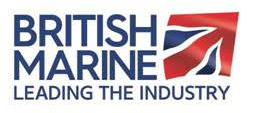 According to new research released today ( 1 March 2016), 3.2m UK adults participated in one or more of 12 boating activities[1] in 2015. This accounts for 6.5% of the total adult population in the UK.
According to new research released today ( 1 March 2016), 3.2m UK adults participated in one or more of 12 boating activities[1] in 2015. This accounts for 6.5% of the total adult population in the UK.
In light of the poor weather conditions and an overall downward trend experienced across recreational sports last year, boating outperformed many of its counterparts observing only a minimal decline of 0.6 percentage points in UK participation (compared to 7.1% in 2014). This is in contrast to the higher declines reported by other sports.
In particular canoeing, which remained the most popular boating activity in 2015 (2.9% of UK adults), is only bettered by two other sports when it comes to the biggest increase in participation in recent years.
The research also found that participation in any watersports activity, in addition to the 12 core boating activities, including hobbies such as sea angling, leisure subaqua diving and coasteering, stood at 12.4m (25.2% of UK adults) in 2015. This is a slight decline of 1.6 percentage points (compared to 26.8% and 13.1m in 2014), however still remains higher than the 2011 pre-Olympics figure.
The Watersports Participation Survey is conducted annually by a consortium of leading marine bodies including British Marine, Royal Yachting Association (RYA), Maritime and Coastguard Agency (MCA), Royal National Lifeboat Institution (RNLI), British Canoeing (BC) and the Centre for Environment, Fisheries and Aquaculture Science (Cefas).
Key findings
Popular activities: the most popular boating activities stayed much the same in 2015 with canoeing welcoming 1.4m UK participants and motor boating/cruising and small sail boat activities remaining the second most popular, both with 0.9% of the population (421, 000 and 418, 000 respectively).
Other activities which fared well in 2015 included canal boating, the use of personal watercraft and yacht racing, which all maintained steady participation figures (379, 000, 171, 000 and 94, 000 UK adults respectively). Surfing, bodyboarding and paddleboarding saw a combined 996, 000 UK participants (2.0% of the UK population), a rise of 0.6 percentage points on the previous year (from 711, 000 and 1.4% in 2014).
Frequency: 2015 saw a continued steady rise in the frequency of boating participation since 2013. During this time, participation of the 12 boating activities in the UK has risen from just below five times, to close to six times. In addition, UK participation in any watersport activity has also seen an increase over the last four years from roughly eight times to 10.
Boat ownership: boat ownership has stayed stable, with an average of 1.1m boats, including 530, 642 canoes and kayaks and 178, 433 small sailing boats, owned by households in the UK in 2013-15. Since 2010 there has been a rise in craft being kept in the UK rather than abroad and in 2015 this peaked with 95% of boats being kept in the UK.
In addition, although a third of participants were the owner of the craft, the most popular way to take to the water in 2015 was on a friend or family member’s boat (41.4% of participants).
Inland vs. coastal: in previous years the difference between inland and coastal participation of any boating activity has stood equal at 50% each, but 2015 saw a slight shift towards more people taking to the UK’s lakes, canals and rivers (53% inland, compared to 47% coastal participation).
Importance of the weather: historically there has been a strong correlation between the temperature and activity rate. With 2014 recorded as the hottest year on average since 1910, whereas 2015 saw a drop in sunshine hours and average temperature, the slight decrease of participation in 2015 can be somewhat understood by this relationship.
This correlation is particularly evident when studying activities outside of the 12 boating activities which reported some of the biggest decreases in participation. This included a decline of 1.8 percentage points in leisure time at the beach and a fall of 0.6 percentage points in participation of outdoor swimming in 2015.
Howard Pridding, Chief Executive of British Marine, said: “Between 2013 and 2014, boating and watersports took place in the context of some of the UK’s best weather of the last decade. In light of this, it is encouraging that in 2015, despite milder conditions, levels of boating participation have remained steady.
“The forthcoming months offer tremendous opportunities to encourage more people to get out on the water. By building on the exposure that the 2016 Olympics & Paralympics and the Louis Vuitton America’s Cup World Series brings to our industry, more people will be able to take the chance to safely enjoy the rich experiences that being on the water can provide.”
Hannah Mills, 2012 Olympic Silver Medallist sailor and returning competitor to the 2016 Olympics, advocates her support for increasing boating participation: “You don’t need to be rich and you don’t need to have the sea on your doorstop. There are little reservoirs and lakes and you don’t need your own boat. You can just go along, pay a small bit of money, jump in a boat and have a go. It’s a very accessible sport but I don’t think people really realise that.”
To find out about the boating and watersports activities in your area visit the following sites:
For further information please contact:
- Annabel Wildey, awildey@britishmarine.co.uk, 01784 223811
- Camilla Colborne, ccolborne@britishmarine.co.uk, 01784 223614
To download the executive summary report please visit: http://britishmarine.co.uk/
Members of the press can request a copy of the full report by emailing: pr@britishmarine.co.uk.
[1]The 12 boating activities include: small sail boat racing, other small sail boat activities, yacht racing, yacht cruising, power boating, general motor boating/cruising, canal boating, canoeing, rowing/sculling, windsurfing, water skiing and wakeboarding, using personal watercraft.
Data taken from the Guardian report on the Olympic legacy (quoting figures shared by Sport England) which is referenced to in the Watersports Participation Survey 2015. Findings include a 9.7%, 8.9% and 4% decline in participation of cricket, swimming and football in 2015 respectively.
According to findings from the Active People Survey (APS), the three sports to experience a rise in participation since 2005/06 are Athletics, Table Tennis and Canoeing with increases of 64.50%, 45.50% and 28.80% respectively.
Any watersports activity in addition to the 12 core boating activities: surfing/body boarding/paddle boarding, kitesurfing, angling, cliff climbing activities, coastal walking activities, spending general leisure time at the beach, outdoor swimming, leisure sub-aqua diving (open water – from the shore or the boat), coasteering.
The Watersports Participation Survey 2015 uses a nationally representative sample of around 12, 000 respondents from across the United Kingdom via omnibus. Since 2011, in addition to the omnibus survey, a bespoke online survey has been used to ask more detailed questions of a representative sample of watersports participants. In 2015, the sample for this survey was 2, 788 respondents.
British Marine (the trading name of British Marine Federation Limited) is a membership organisation leading the UK leisure, superyacht and small commercial marine industry. It has over 1, 600 members drawn from both seagoing and inland sectors and represents an industry employing more than 31, 500 people in the UK. For more information about the work of British Marine and how to join, please visit the website: www.britishmarine.co.uk.
The Royal Yacht Association (RYA) is the national body for all forms of recreational, competitive and professional boating. It represents dinghy and yacht racing, motor and sail cruising, RIBs and sportsboats, powerboat racing, windsurfing, inland cruising and personal watercraft. The RYA is committed to promoting all forms of boating and making them accessible to everyone. For more information please visit: www.rya.org.uk.
The Maritime and Coastguard Agency (MCA) are committed to facilitating international trade and growth of the UK economy through maritime safety, both in terms of prevention and ‘blue light’ emergency response activities. MCA’s vision is to be the world’s best maritime safety organisation, committed to Safer Lives, Safer Ships, Cleaner Seas. For more information, please visit: www.dft.gov.uk/mca/.
The Royal National Lifeboat Institution (RNLI) is the charity that saves lives at sea. Its volunteers provide a 24-hour search and rescue service in the United Kingdom and Republic of Ireland from 237 lifeboat stations. The RNLI has lifeguards on over 220 UK and Channel Island beaches and operates a specialist flood rescue team. The RNLI was founded in 1824 and, since then, its lifeboat crews and lifeguards have saved over 141, 000 lives. For more information, or to donate, visit: www.rnli.org.
British Canoeing (BC) is the lead body for canoeing and kayaking in the UK. Since it was formed in 1936 the organisation has grown considerably, and the range of canoeing opportunity has increased tremendously. British Canoeing is also the membership body for paddlers and affiliated bodies in England and develops programmes to support and develop existing and potential paddlers. Membership bodies for home nations include Scottish Canoe Association, Canoe Wales and Canoe Association of Northern Ireland. For more information, please visit:www.britishcanoeing.org.uk.
The Centre for Environment, Fisheries and Aquaculture Science (Cefas) is a world leader in marine science and technology, providing innovative solutions for the aquatic environment, biodiversity and food security. It is the UK’s most diverse centre for applied marine and freshwater science and research, covering an unrivalled breadth of specialist areas to provide a fully integrated, multi-disciplinary approach. Its customer base is diverse, including the UK government and UK Overseas Territories, international governments, public and private sector organisations. Cefas is an Executive Agency of Defra. For more information, please visit: www.cefas.co.uk.





